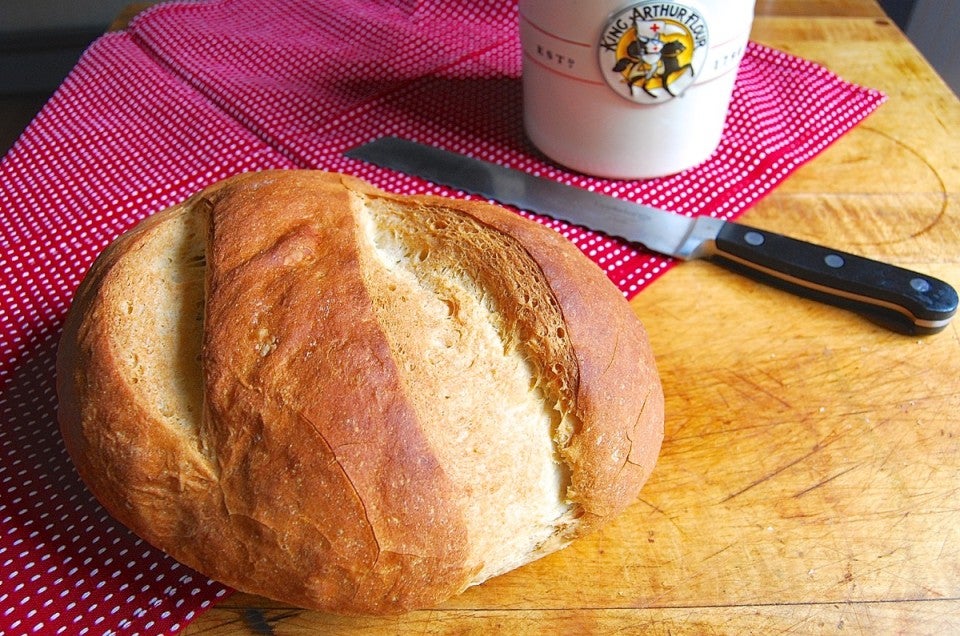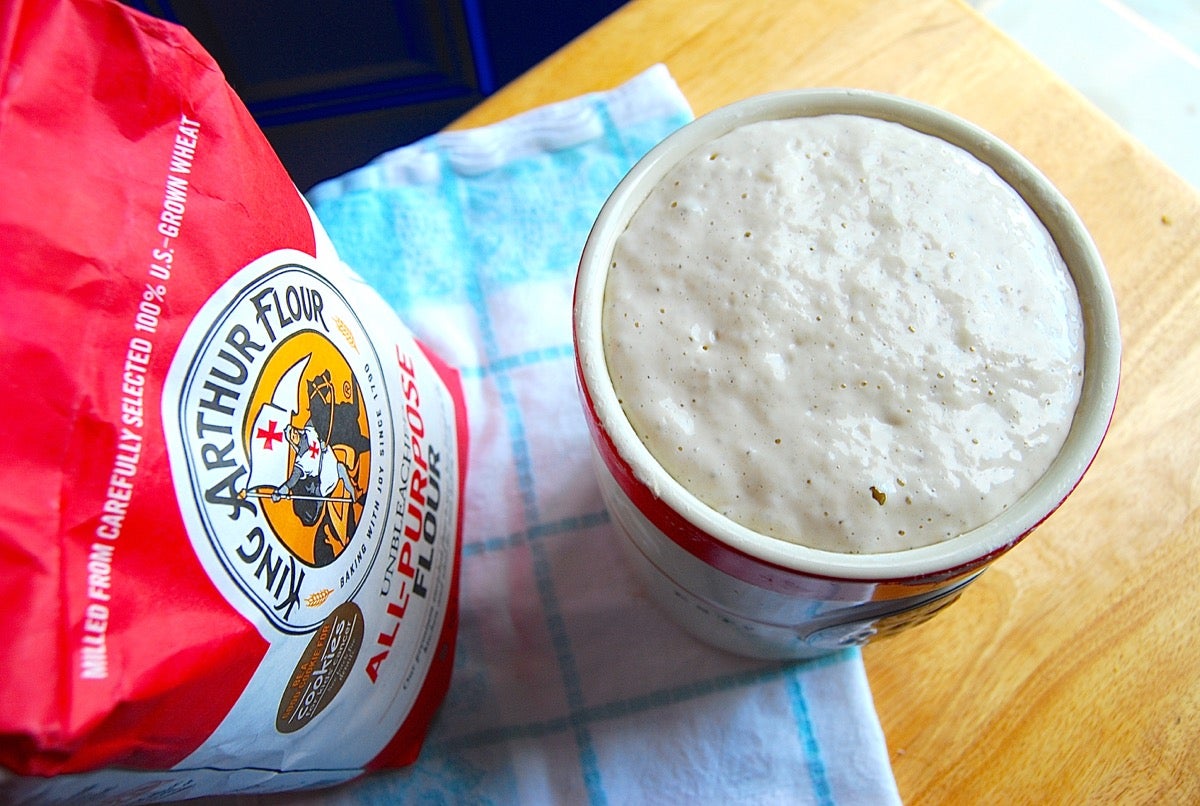


“PJ, you have to do a sourdough blog.”
Halley, our Web projects manager, was cracking the whip on me. That’s what project managers do; it’s their job.
“Awwww, do I have to? I hate sourdough. It’s so…. fussy,” I said, trying to weasel out of it. “I don’t even like sourdough bread. C’mon, you don’t really want a sourdough blog, do you?”
But Halley was a rock. “Sourdough is, like, our most searched-on term. You WILL do a sourdough blog.”
“Oh, WHATEVER.” Grumble grumble grumble…
Thus did I launch myself, feet dragging, into My Big Fat Sourdough Adventure.
And guess what? I now have a new outlook on sourdough. Remember the TV commercial for Life cereal? “He likes it! Hey, Mikey!” That’s me with my new best friend, sourdough.
So it’s not as fussy as I thought. Oh sure, the first couple of days require a bit of on-and-off babysitting as you create your starter. But after that, it’s a piece of cake. Sourdough chocolate cake, to be precise.
And the bread! I still don’t like SOURdough bread. But the first loaf of bread I made was a revelation: it wasn’t sour at all. It was just intensely flavorful, chewy/moist, with lovely irregular holes throughout, perfect for dipping in olive oil. And the second loaf, with its extra long, cool rise, was tangy enough to satisfy even the most devout fan of SOURdough bread.
You may not think you’re a sourdough fan. You may think it’s too much trouble. But trust me; I’ve made the starter, I’ve fed it and tended it, I’ve made the bread and the cake and the incredibly luscious waffles. If I can do it, so can you.
So now I'm looking forward to trying the carrot cake and the English muffins and the ciabatta and the pumpernickel bread and... the popovers? Who knew!? I'm going to go try them RIGHT NOW.
Thankfully, there’s a crock of starter sitting in my fridge, ready to go. How handy is that?
I LOVE sourdough.
Thanks, Halley.
Let's start with some “fed” or “ripe” starter. If you know what this means, skip to the next picture. If not, here's an explanation:
“Fed” or “ripe” starter is one that you've taken out of the fridge, stirred down, discarded 1 cup, fed the remainder with water and flour, and let rest, covered, for 4 to 12 hours. It gets mildly bubbly. You’re going to use 1 cup of this for your bread. Then you'll feed the remainder, let it rest (covered) at room temperature for 2 to 4 hours, and stick it back in the fridge. Confused? Don't worry; check out our sourdough tips.
Actually, let's backtrack. I'm assuming you have some sourdough starter already on hand. If you don't, you'll need to ask a friend for some; or you can make your own. Frankly, I tried to make my own from scratch, and it simply wasn't a happy experience. So I started over with the fresh sourdough starter we sell here at the Baker's Catalogue. Which is actually pretty cool, since it's a direct descendant of a starter that's been in the family of Brinna Sands, who wrote our “King Arthur Flour 200th Anniversary Cookbook,” for over 250 years. So this is one historic starter.
And now, after that brief pause for a message from our sponsor, back to the show. Take your 1 cup of fed starter...
...and combine it with the remaining ingredients, stirring till cohesive.
Then knead to make a fairly sticky (but smooth and elastic) dough.
Round into a ball, place in a bowl, cover, and allow to rise till doubled, about 90 minutes to 2 hours.
Ah, lovely!
Gently divide the dough in half, and shape it into two oval loaves. There's no need to punch it down; it'll deflate somewhat as you handle it. Place the loaves on a parchment-lined or lightly greased baking sheet, cover, and let rise till very puffy, about 1 hour.
The loaves will spread out as they rise; that's fine. They'll perk up once they hit the oven's heat. Spray with water...
...and make two fairly deep slashes in the top of each. Both the water and the slashes keep the crust soft longer, allowing loaves to rise more fully. But don't worry; the crust has plenty of time to become chewy once the loaves are fully risen.
And here's a lovely loaf of sourdough bread.
I'm a “grip it and rip it” type of bread person.
And then there are the refined folks who use a knife... Look at that creamy color and beautiful texture, eh?
The sourdough bread you've just read about has rich, deep flavor, but it's not particularly sour. To make a tangy sourdough loaf that's more what people expect from sourdough, you'll use nearly this same recipe. You'll simply omit the yeast; add an overnight rest in the fridge; and lengthen the amount of time the dough rises, both in the bowl, and as shaped loaves.
Read, review, and rate (please!) our recipe for Rustic Sourdough Bread, for a richly flavored loaf that's not sour; or Extra-Tangy Sourdough Bread, for a loaf that's assertively sour.
P.S. Here are the sourdough popovers:
In the oven, looking like extra-tall muffins...
...and finished. Now, I'd call these more muffin or bun than popover, but never mind the nomenclature. They were fast and easy to stir up, and what's not to like about a steaming-hot-from-the-oven roll?
And then I decided, well, how about baguettes? The dough was a little too slack to round up nicely; in retrospect, I should have supported it in a baguette pan, rather than try to bake it freeform. But they're crusty and yummy despite their not-quite-baguette shape.
New to sourdough? Find the help you need for all of your sourdough baking at our Sourdough Baking Guide.


